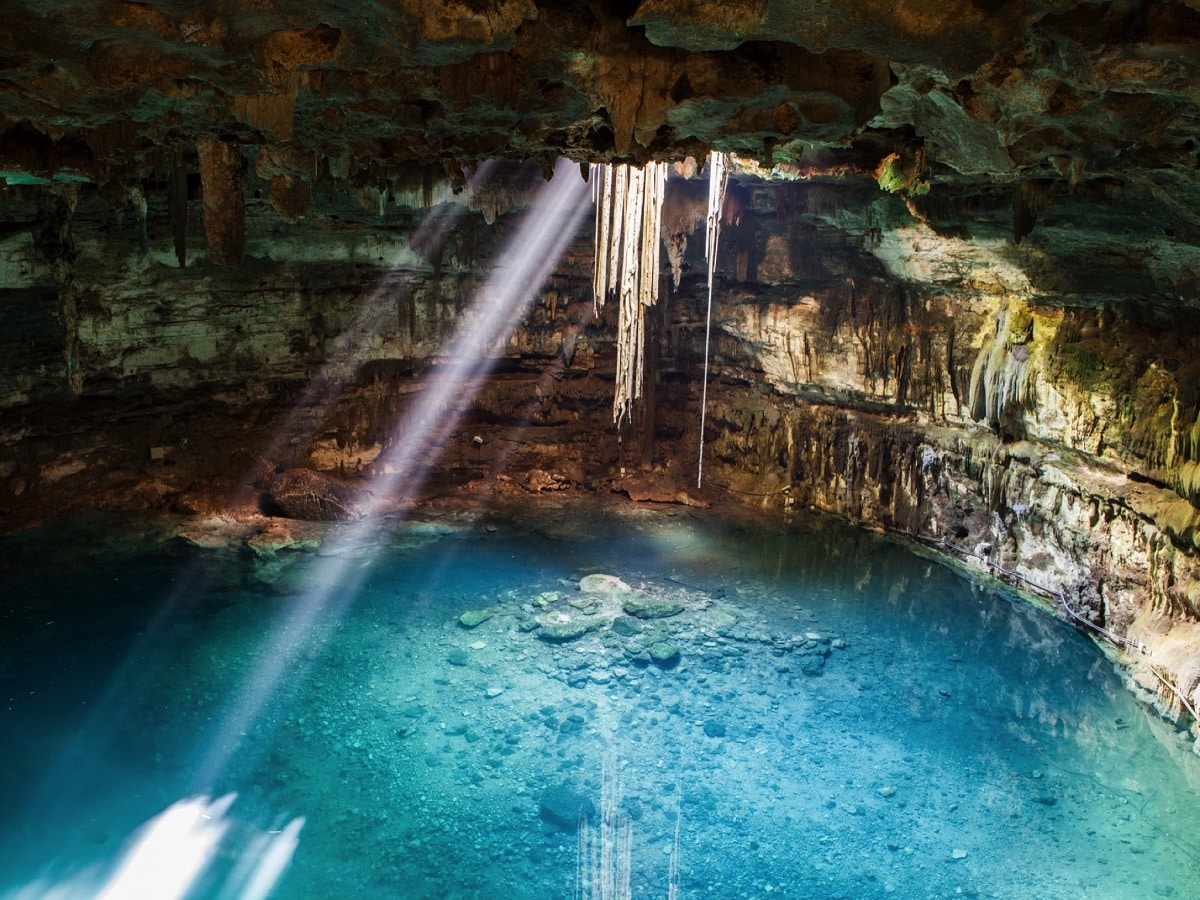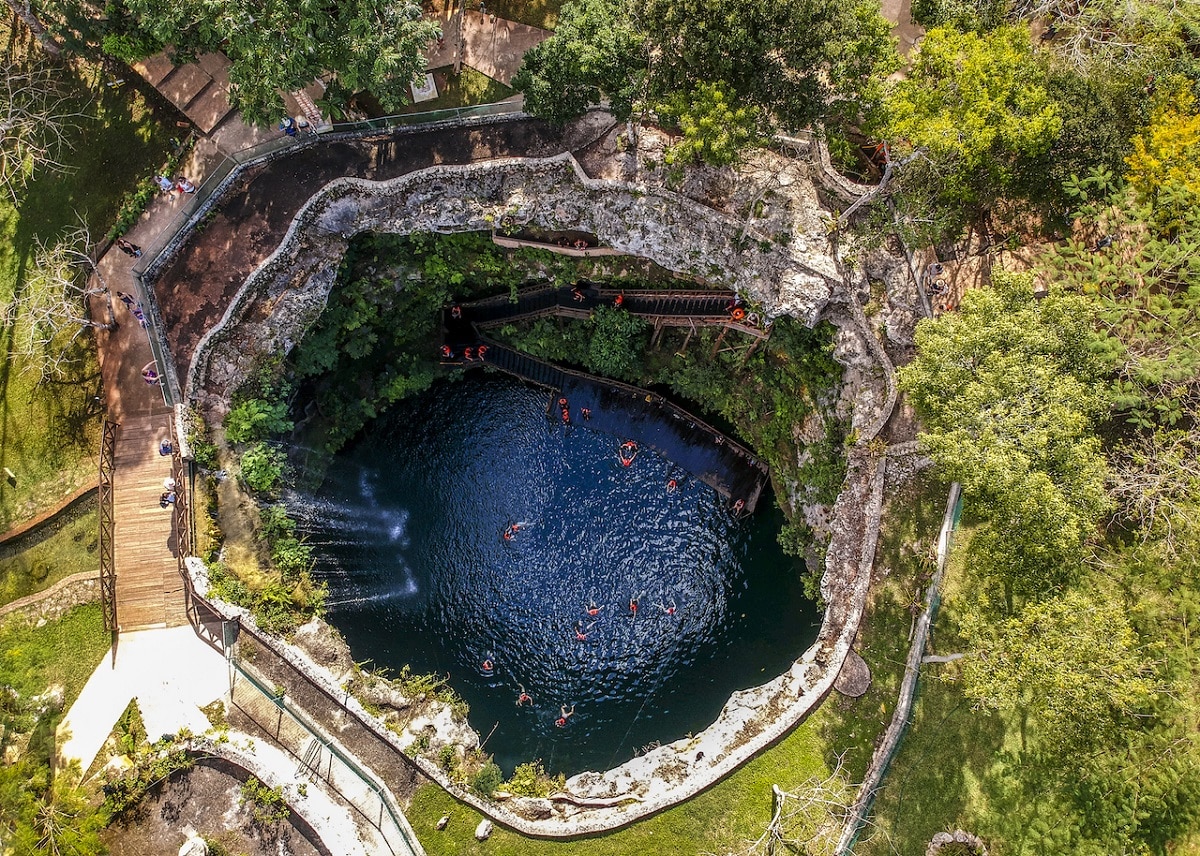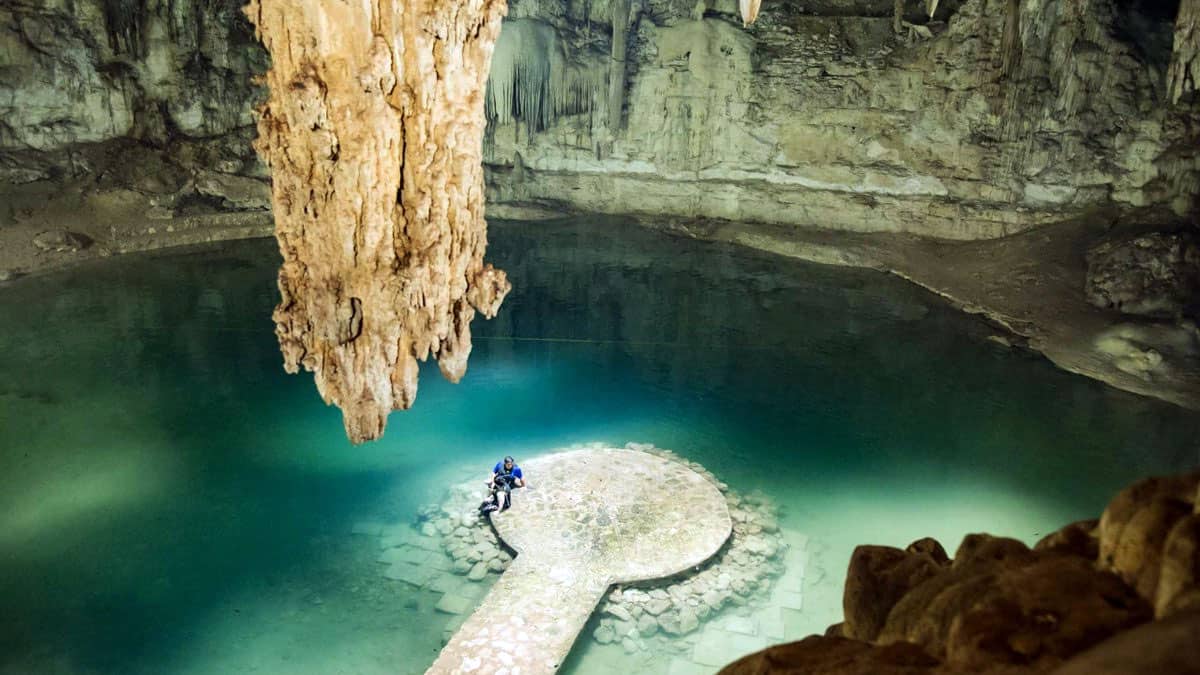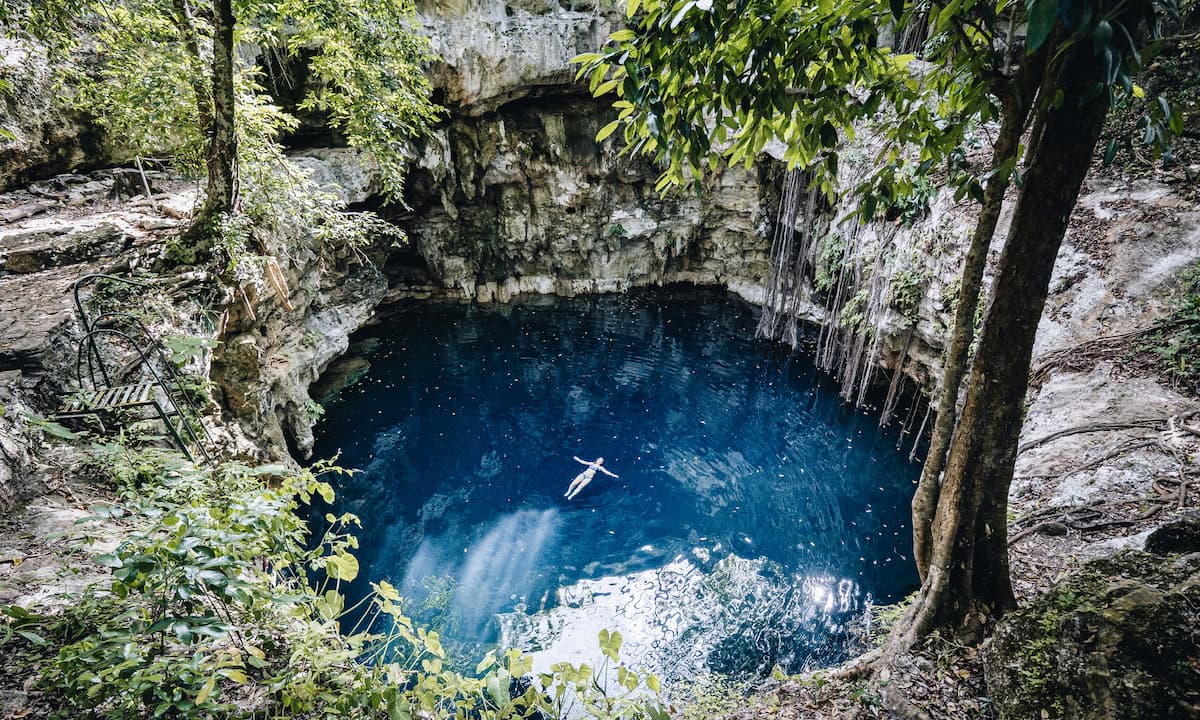
The cenotes are a very important tourist attraction in the Yucatan Peninsula in Mexico and over time they are visited more and more frequently, becoming more and more famous and loved by all who visit them. However, many people are still won over by these beautiful natural pools. Some others don't know What is a cenote.
For this reason, we are going to dedicate this article to telling you what a cenote is, its characteristics and beauty.
What is a cenote

Its name comes from the Mayan "tz'onot" which means cave with water. It is said that the cenotes were formed in part due to meteorites that killed the dinosaurs., since when they hit they created a series of empty caves, which in turn is related to the last ice age.
When the Yucatan Peninsula was a coral reef covered by the sea, the sea level dropped so drastically that it exposed the entire reef, causing it to die off, giving way to rainforest over time.
By the time the rain arrives, it begins to mix with the large amount of carbon dioxide that was in the atmosphere at the time, forming carbonic acid, which changes its acidity when it comes into contact with the ground. When the fresh water mixes with the sea salt, it begins to hit the limestone, gradually dissolving it and creating holes in it. Over time, the holes began to expand their territory, forming tunnels and waterways, similar to rivers on the surface.
The word cenotes or Xenotes comes from the Mayan dzonot, which means water hole. For the Mayans, these places were sacred because they were the only source of fresh water in the jungle. In the Yucatan Peninsula there are supposedly more than 15,000 open and closed cenotes. On the other hand, in Puerto Morelos, 20 minutes from the city of Cancun on the highway to the Riviera Maya, is the famous Ruta de los Cenotes, with several different activities depending on their type. In some places you can snorkel or kayak and marvel at the beautiful scenery that the crystalline waters offer, while in the vaults you can practice descent or free jump for those who seek adventure tourism. Ideal activity.
How did the cenotes originate in the Riviera Maya?

Actually it is not the origin, the cenote is already there, the correct question is, when was the cenote discovered? A young cenote is known for natural erosion, a cenote with a more open entrance means it is older, it has suffered a greater erosion process and has collapsed.
Typically, the cenotes in the Riviera Maya are created by a tree called a banyan, a "parasitic" tree that seeks out the maximum amount of water as its roots grow, so its roots sink into the rock and the tree it begins to grow and begins to get very heavy until it collapses and that hole is made and that is how the cenote began.
Flora and fauna

The flora and fauna of the cenote is unique. and the cenote itself. Because the plants and species they house make the environment a true oasis landscape in the Mayan jungle. Guppies and catfish are the most observed fish in the cenotes.
It is believed that the guppies may have been transported to area waters as a result of the hurricane, where they are common, including some females with eggs, and the species inhabits several cenotes. The arrival of the catfish is also strange: it is believed that they come from the ocean, through underground currents that communicate with some cenotes, as well as with some marine crustaceans.
As for the flora of the cenotes, they vary depending on how far they are from the coast. The coastal cenotes are surrounded by mangroves, palm trees and ferns, while in other cenotes guaya, coconut, cocoa and rubber trees are more common. In caves, it is common for the long roots of these trees to blend in with the landscape of stalactites and stalagmites. These descend from the vaulted ceiling until they reach the water.
types of cenotes
As sea levels change, some caves become empty, causing roofs to collapse, which is how open cenotes form. So we can say that there are three types of cenotes:
Open
In some cases, its walls are cylindrical to let in the sun, although they do not necessarily have to be cylindrical. There are other open cenotes that look like lagoons with no walls of any kind, just crystal clear water.
Most of these Cenotes have a natural beauty as they are surrounded by fauna that give them a very wild color. Cenote Azul is a clear example of an open cenote, since it is totally exposed to the surface and the sun's rays enter the water fully.
Closed
These cenotes are the "youngest" because the water is covered with caves. That does not mean that its waters are turquoise or emerald green, you can perceive if there is any kind of light, natural or electric. In fact, the community has managed to install lights inside these cenotes so that tourists and locals feel safe and calm. An example of this type of cenote is the beautiful Cenote Choo Ha, which has been much visited and loved by thousands of tourists.
half open
They are not so young or so old because the water has not yet been exposed to the elements, but part of them let the light enter directly into the cenote and perhaps observe the beauty of itSome of them even have such clear water that you can see the flora and fauna that inhabit them. For example, Cenote Ik kil, its shape is impressive, from the entrance you can see how beautiful this place is.
As you can see, once you know what a cenote is, it was surely going through your head and traveling to these incredible places. I hope that with this information you can learn more about what a cenote is, its characteristics and origin.